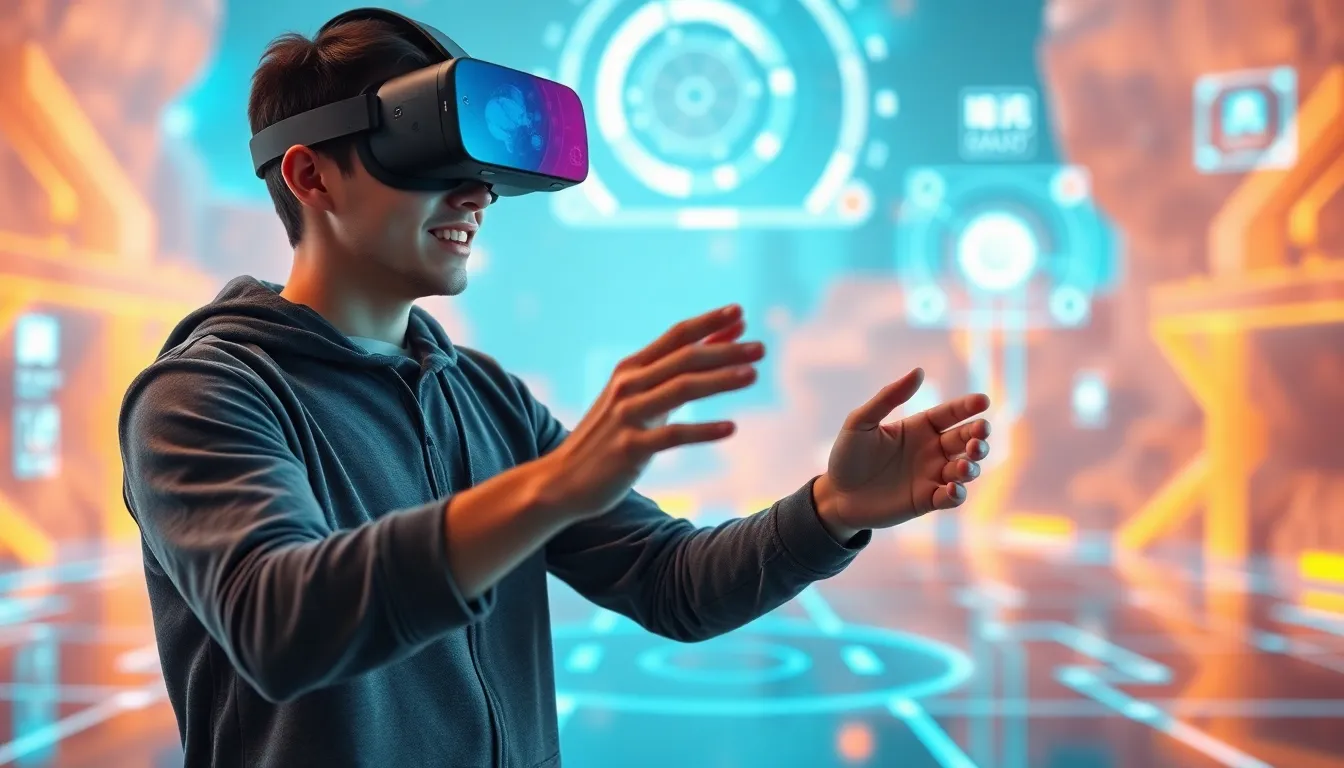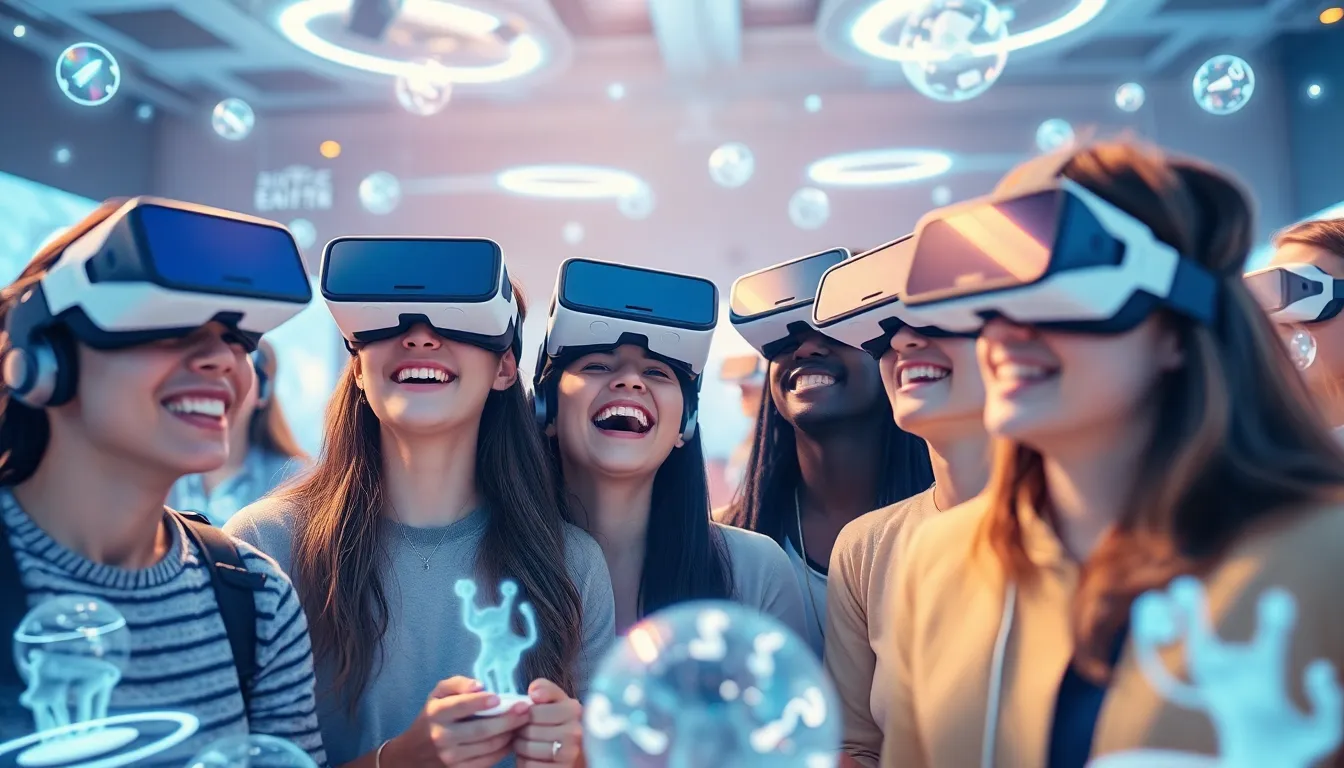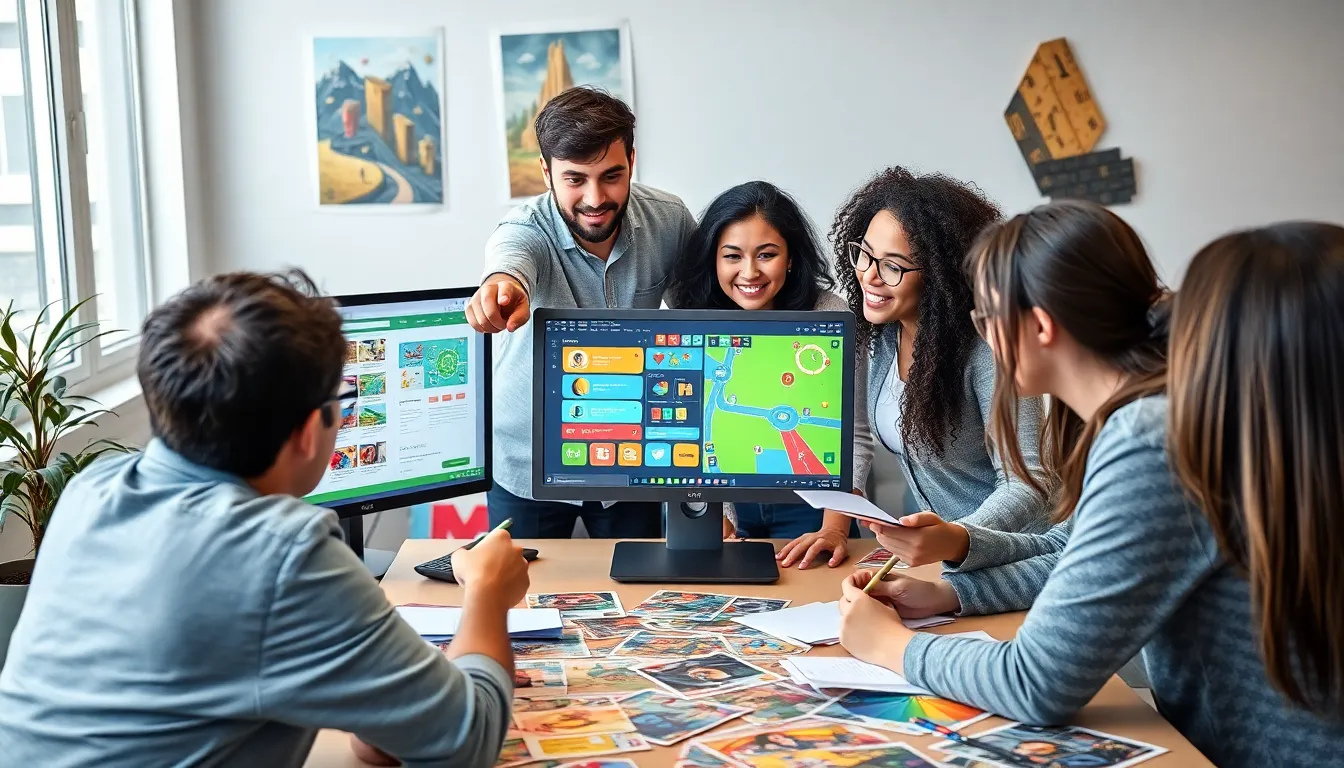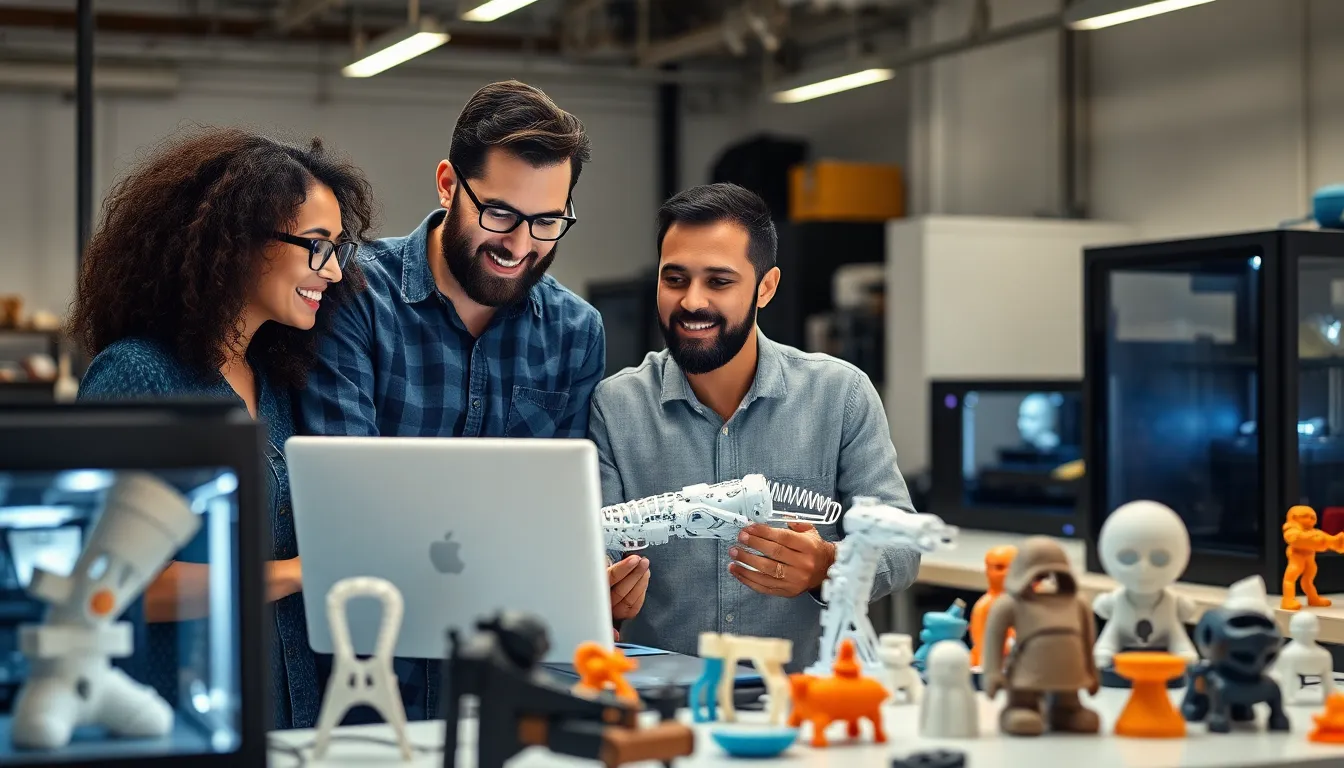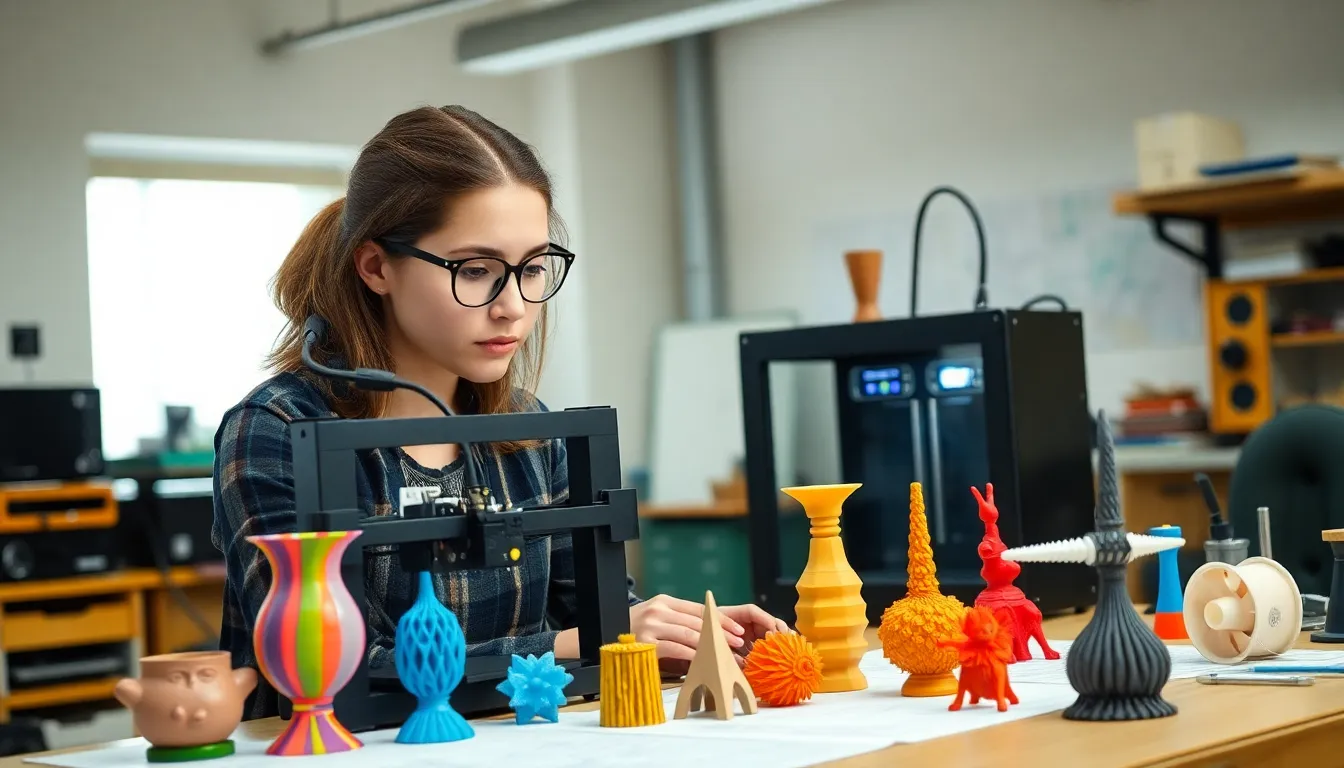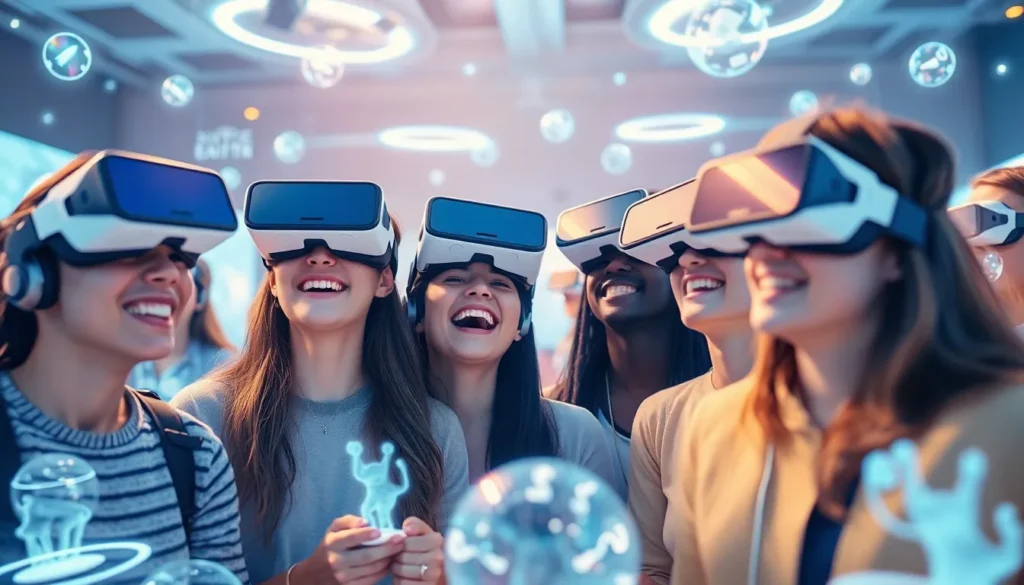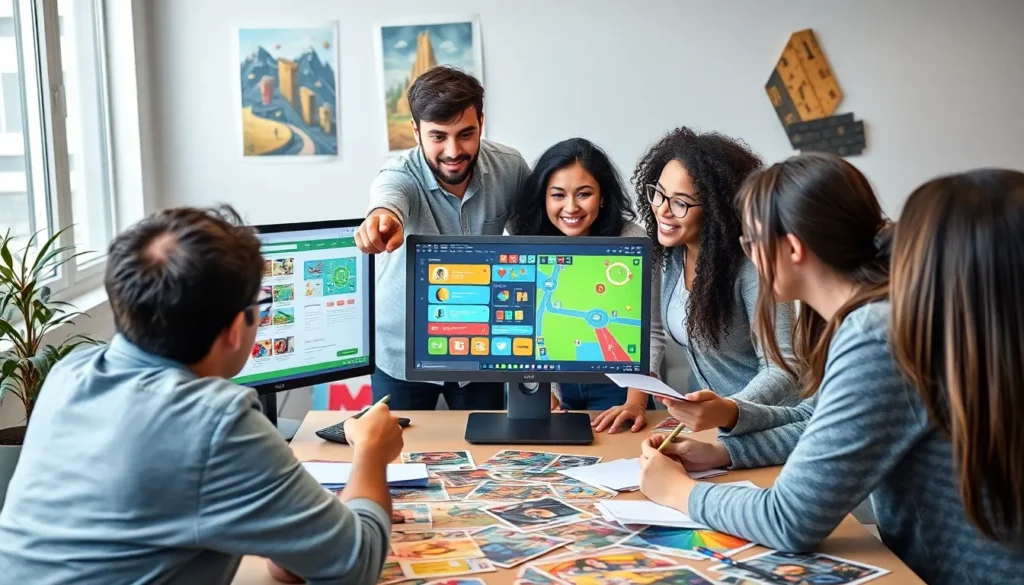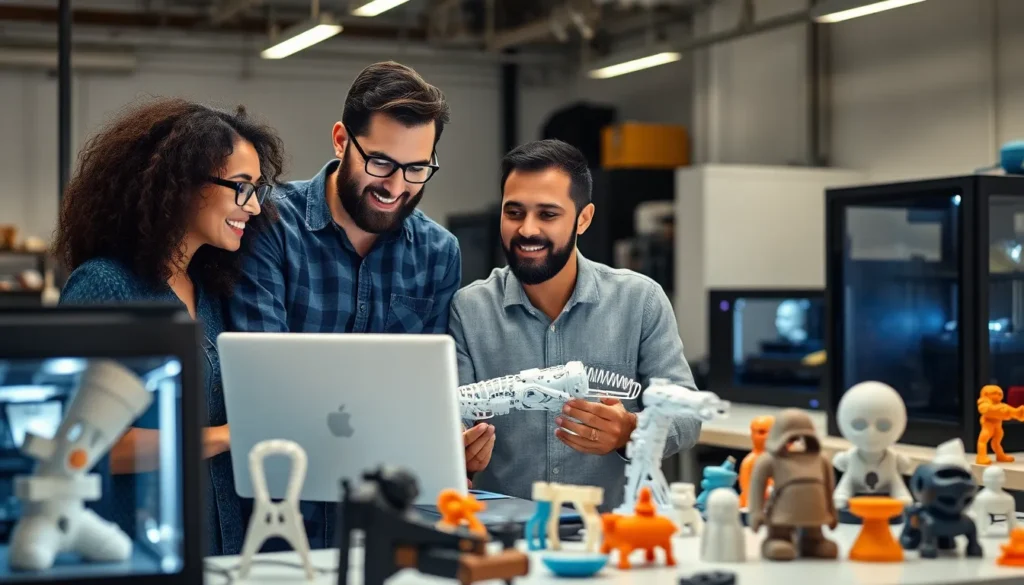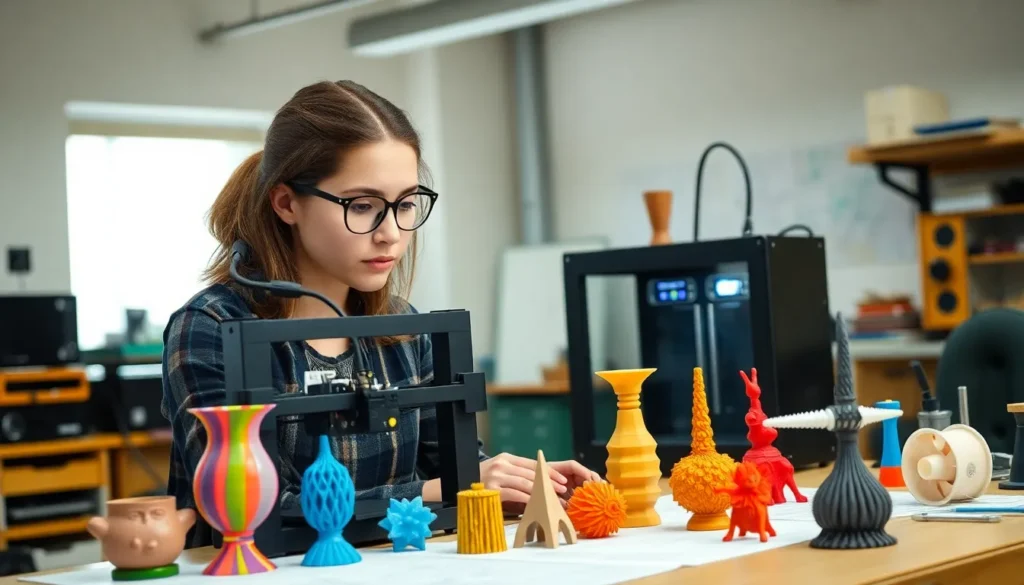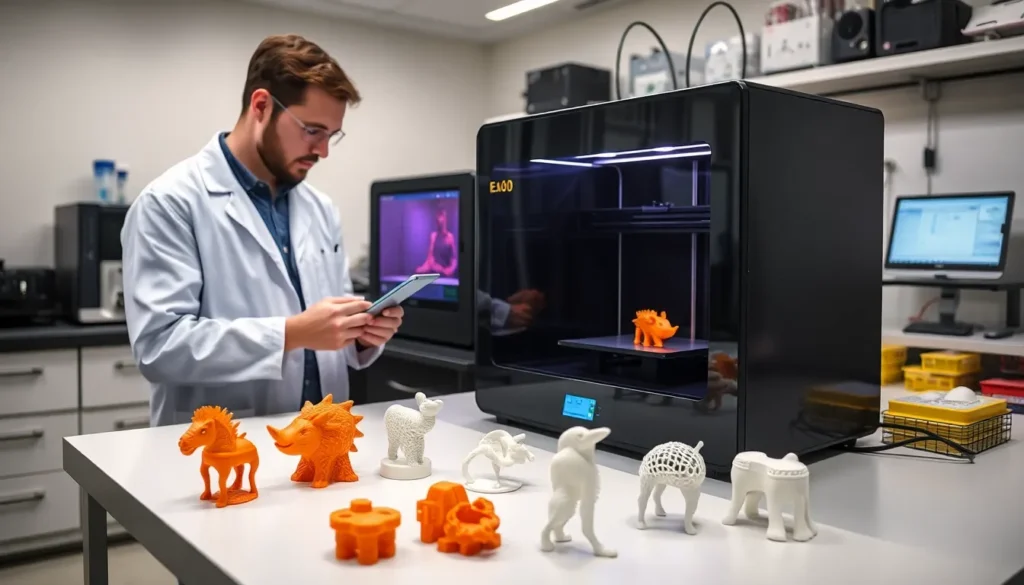Imagine stepping into a virtual world where your every movement translates into action without the need for cumbersome controllers. Gesture-controlled VR is revolutionizing the way users interact with digital environments, offering a seamless blend of reality and imagination. This cutting-edge technology allows users to navigate, manipulate, and explore virtual spaces through natural hand movements and body gestures.
As the demand for immersive experiences grows, gesture-controlled VR stands at the forefront of innovation. It enhances user engagement by creating intuitive interactions that feel more organic and less restrictive. With advancements in sensors and tracking technology, the future of virtual reality is not just about what users see but how they interact with what they see. This article delves into the fascinating world of gesture-controlled VR, exploring its potential, applications, and the impact it’s set to have on various industries.
Table of Contents
ToggleOverview of Gesture-Controlled VR
Gesture-controlled VR incorporates advanced sensor technology to enable intuitive interaction within virtual environments. This innovative approach allows users to manipulate objects, navigate spaces, and engage with digital content using natural movements. Key components of this technology include motion tracking devices, hand recognition systems, and depth sensors, all of which contribute to a seamless user experience.
Key Features of Gesture-Controlled VR
- Natural Interaction: Gesture-controlled systems recognize and interpret body movements in real-time, reducing the learning curve for new users.
- Enhanced Immersion: Users experience deeper immersion due to the direct correlation between physical movements and virtual actions.
- Versatile Applications: Industries such as gaming, education, and healthcare utilize gesture-controlled VR for training, simulation, and therapeutic purposes.
Technological Advancements
- Real-Time Tracking: High-fidelity motion sensors track users’ movements, providing accurate feedback within virtual environments.
- Improved Accuracy: New algorithms enhance gesture recognition, leading to fewer errors and more precise interactions.
- Accessibility Features: Gesture-controlled VR solutions increasingly incorporate accessibility options, allowing individuals with disabilities to participate fully in virtual experiences.
Future Prospects
- Wider Adoption: As hardware becomes more affordable, businesses are likely to adopt gesture-controlled VR in training and customer engagement.
- Integration with AI: Combining gesture recognition with artificial intelligence could allow for more adaptive and responsive virtual environments.
- Cross-Platform Compatibility: Streamlined cross-platform solutions will enhance user experiences by providing flexibility and broader access to gesture-controlled VR applications.
Gesture-controlled VR stands at the forefront of technological evolution, promising to reshape user experiences in diverse sectors through its innovative approach to interaction.
Key Technologies Behind Gesture-Controlled VR
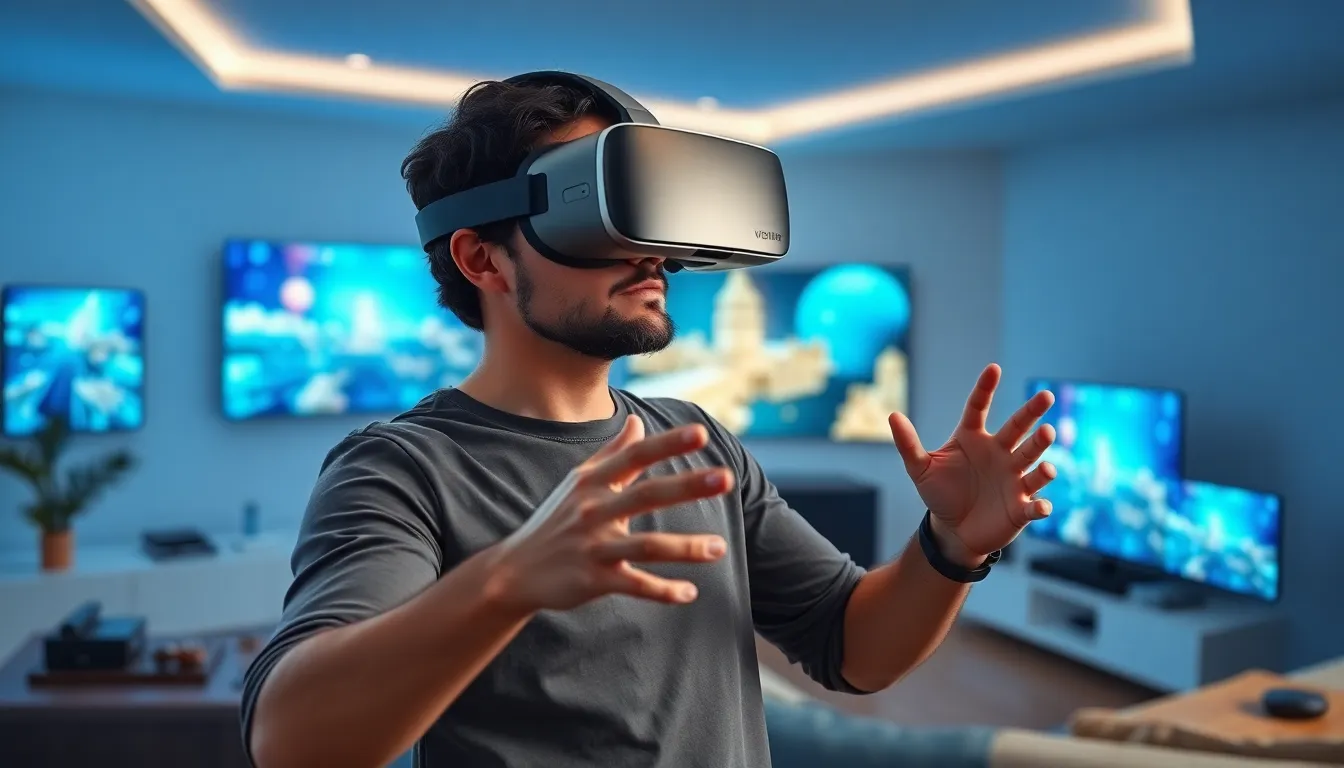
Gesture-controlled VR relies on several key technologies that enhance user interaction and experience. These components work together to create a responsive, immersive environment.
Motion Tracking Systems
Motion tracking systems capture user movements in real time with high precision. These systems employ a combination of infrared cameras and reflective markers to monitor gestures and body positions. Optical tracking systems utilize multiple cameras positioned around the user, collecting data to generate accurate 3D representations of movements. Inertial tracking systems, on the other hand, employ accelerometers and gyroscopes within wearable devices to detect orientation and motion changes. This dual approach ensures fluidity and accuracy, creating a seamless interaction with virtual objects.
Sensor Technologies
Sensor technologies play a pivotal role in gesture-controlled VR by detecting and interpreting user inputs. Depth sensors, such as LIDAR and stereo cameras, measure distances between objects and users, facilitating realistic spatial awareness. Hand recognition systems employ computer vision algorithms to identify and track hand gestures, enabling intuitive control without physical interfaces. Moreover, touch sensors integrated into gloves or wearable devices allow haptic feedback, enhancing the tactile experience in virtual environments. These technologies contribute significantly to the effectiveness and immersion of gesture-controlled VR applications.
Advantages of Gesture-Controlled VR
Gesture-controlled VR offers numerous advantages that improve interaction with digital environments. This technology enhances user satisfaction and engagement through its intuitive design and functionality.
Enhanced User Experience
Gesture-based interactions create a more immersive experience compared to traditional controllers. Users engage naturally with the virtual environment, which fosters greater emotional connections. Real-time motion tracking allows for fluid movements, making actions feel immediate and purposeful. Haptic feedback systems reinforce these interactions by simulating touch sensations, enhancing realism in virtual tasks. This combination of intuitive control and sensory feedback elevates gaming and simulation experiences significantly.
Increased Accessibility
Gesture-controlled VR increases accessibility for a wider range of users. It minimizes reliance on complex controllers, making it simpler for individuals with disabilities to participate. By using natural body movements, users can interact without needing specialized equipment. This technology offers inclusive opportunities in various settings, from educational environments to therapeutic contexts. Enhanced accessibility leads to greater engagement, allowing diverse users to enjoy virtual experiences without barriers.
Challenges in Gesture-Controlled VR
Gesture-controlled VR faces various challenges that affect its effectiveness and user experience. These challenges often stem from technical limitations and user adaptation issues.
Technical Limitations
Technical limitations impede the full potential of gesture-controlled VR. Sensor technology often struggles with accuracy, leading to misinterpretations of user gestures. Several factors influence sensor performance, including lighting conditions and the distance from the sensors. Motion tracking can experience latency, causing delays in user input recognition. Furthermore, many systems require a substantial processing power to analyze gesture data in real-time, which can result in increased hardware costs. Limited field of view from tracking devices may restrict user movement, potentially disrupting immersion.
User Adaptation Issues
User adaptation issues significantly impact the overall acceptance of gesture-controlled VR. Users accustomed to traditional controllers may find it challenging to transition to gesture-based interactions. Inconsistent gesture recognition can frustrate users, leading to a lack of confidence in controlling the virtual environment. Additionally, gestures may require significant practice to master, causing a steep learning curve for new users. Physical fatigue can also occur during prolonged sessions, as continuous arm movements take a toll on user endurance. As such, developers must focus on creating intuitive gestures that require minimal effort while ensuring that users can easily learn and adapt to the new interaction style.
Future Trends in Gesture-Controlled VR
Gesture-controlled VR is evolving rapidly, with significant trends emerging that enhance its functionality and broadens its applications.
Integration with AI and Machine Learning
Integration with AI and machine learning transforms gesture-controlled VR experiences. AI algorithms analyze user behavior in real time, enabling more adaptive and personalized interactions. This intelligent responsiveness minimizes lag and increases accuracy in gesture recognition. For instance, machine learning models can learn individual user patterns over time, refining their recognition capabilities. Enhanced contextual awareness allows for smoother transitions between virtual tasks and environments, ultimately creating a more intuitive user experience.
Potential Applications in Various Industries
Potential applications of gesture-controlled VR span multiple industries, demonstrating its versatility.
- Healthcare: Surgeons utilize gesture-controlled VR for precise simulations, improving training and planning for complex procedures.
- Education: Educators implement this technology to create immersive learning experiences, allowing students to engage interactively and enhance retention.
- Gaming: Game developers leverage gesture controls to improve player immersion and interaction, fostering deeper engagement.
- Real Estate: Virtual tours in real estate leverage gesture control for user-driven exploration of properties, increasing engagement and interest.
- Fitness: Fitness applications use gesture tracking for interactive workouts, providing instant feedback and tracking progress.
As these industries adopt gesture-controlled VR, it drives innovation and enhances user experiences across diverse fields.
Gesture-controlled VR is revolutionizing how users interact with digital environments. By enabling natural movements and intuitive gestures, this technology enhances immersion and engagement across various sectors. As advancements in sensor technology and AI integration continue to emerge, the potential for gesture-controlled VR expands significantly.
While challenges remain in terms of technical limitations and user adaptation, the future looks promising. With growing accessibility and the ability to cater to diverse user needs, gesture-controlled VR is set to reshape experiences in gaming, education, healthcare, and beyond. The journey toward seamless interaction is just beginning, and the possibilities are endless.

